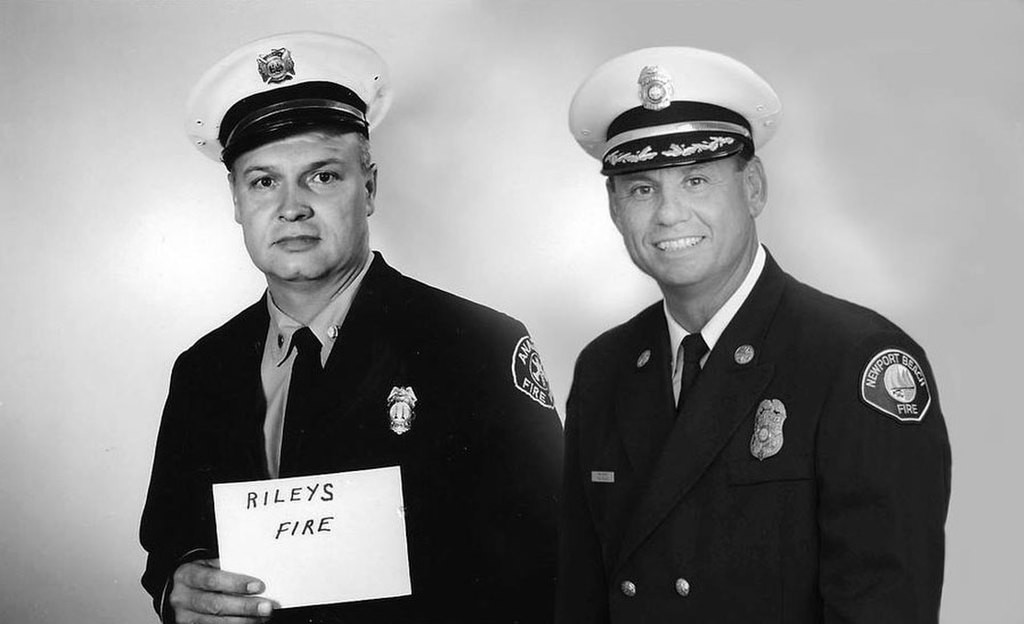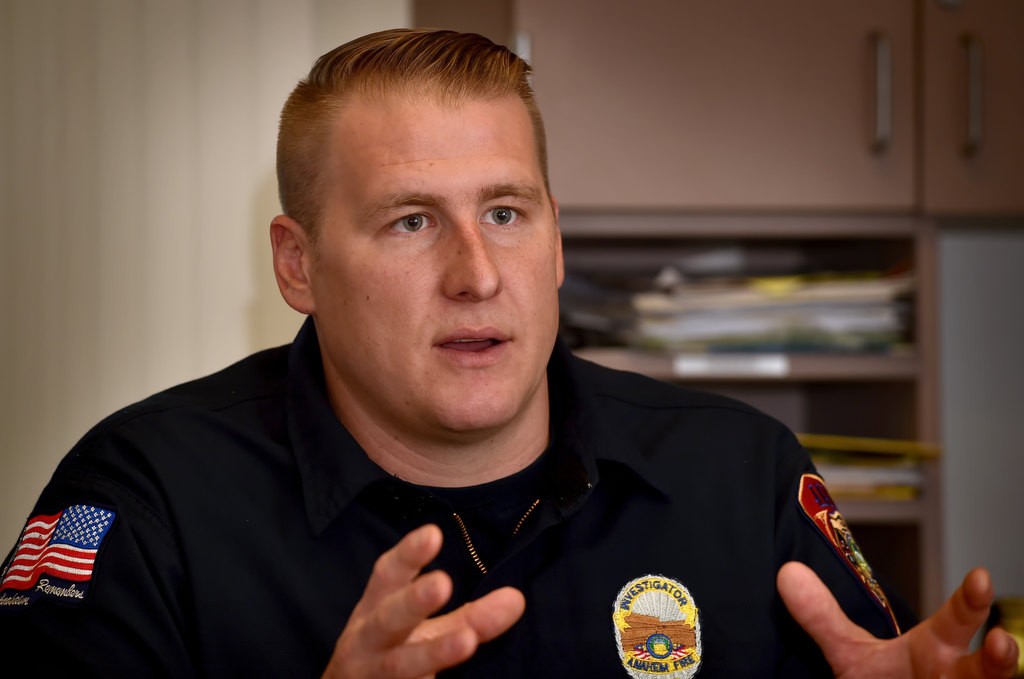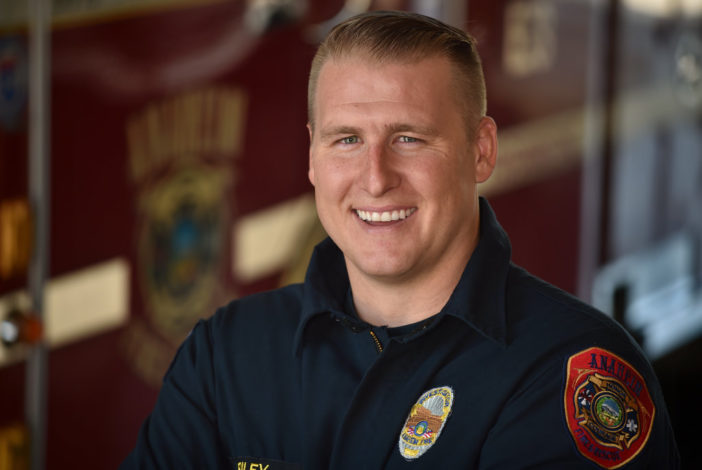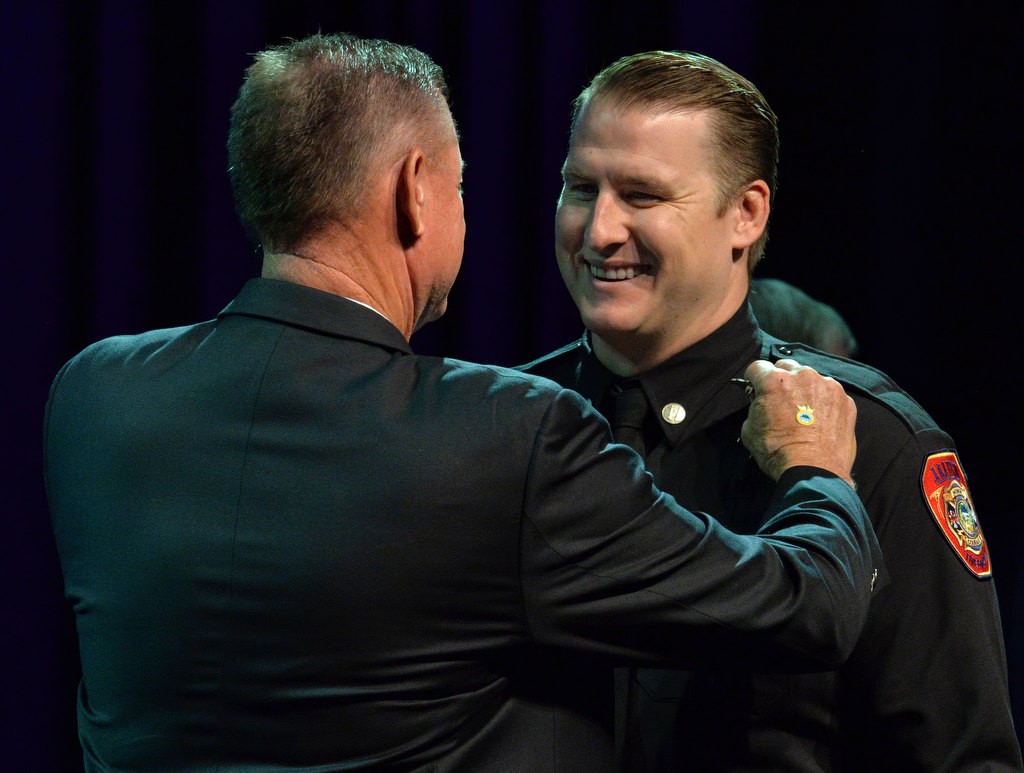As soon as Anaheim Fire & Rescue Capt. Grant Riley arrives on the scene of a recently extinguished fire, his work begins.
He has a system: He checks in with the chief, surveys the scene, talks to firefighters and neighbors. Communication and gathering of information is key.
Then he examines the burn patterns.
“There’s a lot of science that goes into it,” says Riley, one of AFR’s three arson investigators.
A third-generation firefighter – his father, Russ, and grandfather, Tim, both worked for AFR – there was never really any question as to whether Riley would join the fire service. But when he joined the arson investigations team 1 1/2 years ago, he knew it was the right fit.
“I’m a crossword (puzzle) type of guy,” he says. “That’s the fun of it – trying to figure out exactly what happened.”

This 1991 photo shows Russ Riley (right) and Tim Riley. Tim is Grant’s father. Russ is his grandfather.
Photo courtesy of AF&R
An arson investigator is called out when there is no clear obvious cause for a fire. If a homeowner admits to leaving dinner on the stove, case closed. But if there’s no clear reason, that’s when Riley comes onto the scene.
There are four classifications for a fire: natural (lightning, for example), accidental (a candle left on), incendiary/arson (intentional) and undetermined. When the fire is intentional, there are six categories for criminal fires: vandalism, excitement, revenge, crime concealment, profit and extremism.
Determining the cause of the fire relies heavily on pulling together various pieces of the puzzle until a clearer picture forms. Riley, for example, will try to establish a timeline by asking residents and neighbors what they were doing when the fire occurred. He’ll ask about any recent repairs in the home – had the dryer been acting up?
Not all interviews generate a lot of information because people may be afraid to talk, or in the case of arson, someone has something to hide. But this in itself can give Riley information of a different form.
“A lot of times, too, people are scared that they’re going to get in trouble,” he says.

Anaheim Fire & Rescue Capt. Grant Riley talks about his role as an arson investigator.
Photo by Steven Georges/Behind the Badge OC
A very common and telling burn pattern is the v-shape, named so because it starts at a bottom point and extends wider as it moves up. This shape forms because as fire burns, heat rises and widens. The bottom point of the v-shape can help determine the area of origin and ignition source. Other factors can interfere and lead to a false positive, however, so an investigator can’t rely on patterns like the v-shape alone. (For instance, an open nearby window can alter the burn pattern because “fire is basically consuming air” and the fire will change course to follow the oxygen.)
As he continues with the investigation – with a large camera (because “a picture’s worth a thousand words”) and flashlight in hand – he gathers all the various bits of seemingly disconnected information to find a pattern. For example, on some surfaces, such as a couch, Riley can deduce the direction a fire traveled by seeing where it burned. Also, if he finds an electrical outlet that appears burned up on the inside, it could be the ignition source. (The last fire he investigated was caused by long-term use of an extension cord, which he found completely burned up.)
Eventually, hopefully, there is a determined cause – though that’s not always a guarantee. As Riley explains, the rules have changed as to how a determination can be made, and it’s gotten harder. Before it was a process of elimination in classifying a fire. But now the investigator must figure out the origin, ignition source, fuel, etc.
While Riley says being an arson investigator isn’t always as romantic as it appears in the movies, there is a certain intuitiveness investigators develop over years of practice and experience.
When Riley isn’t investigating a fire in Anaheim or for another city that doesn’t have an investigations team (including Fullerton and Brea), he’s working his regular shift as a firefighter. But when he gets the call for an investigation, he’s ready.
“It was a perfect fit,” he says. “[Arson investigation] just kind of fit my style.”

Anaheim Fire & Rescue Capt. Grant Riley talks about his role as an arson investigator.
Photo by Steven Georges/Behind the Badge OC
 Behind the Badge
Behind the Badge





